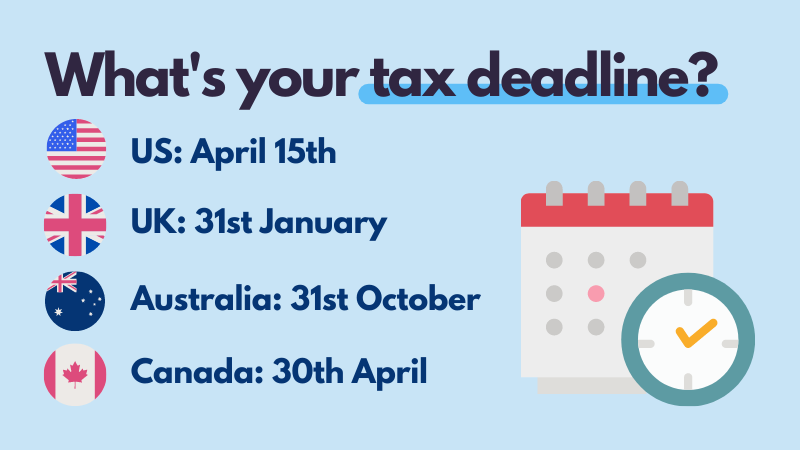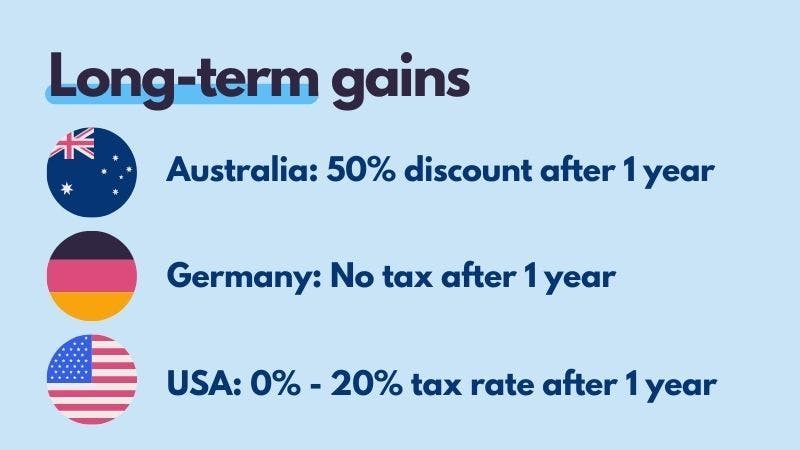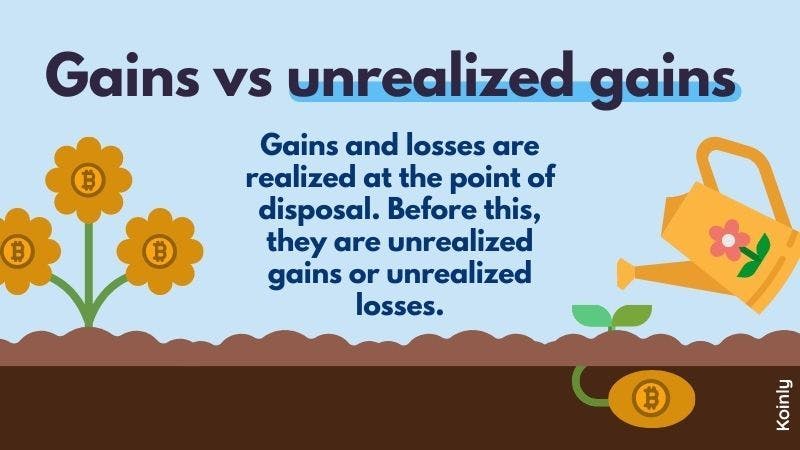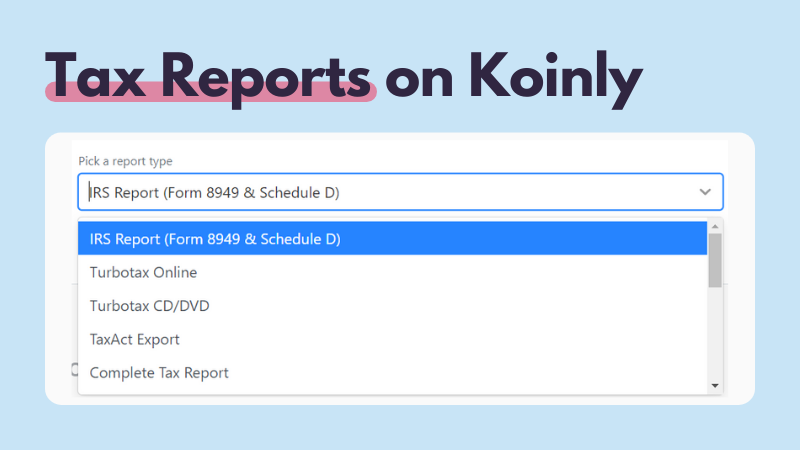How to Prepare Your Crypto Taxes for Filing
End of year tax deadlines are looming for many crypto investors around the world. Learn how to prepare your crypto taxes to optimize your position and pay less tax.
Tax offices worldwide are sending a clear message to crypto investors - it’s time to pay the taxman.
Notably the IRS, HMRC, the ATO and the CRA have all announced they’re working with large crypto exchanges to access customer information. This is to ensure crypto investors are accurately reporting additional income and capital gains. Many crypto investors have also received letters from tax offices warning them that they need to report their crypto investments.
For many crypto investors, 2022 will be the first time they pay taxes on their crypto assets, - and it can be pretty daunting.
Follow our simple crypto tax prep tips to ensure you’re not left in the lurch come tax time.
Know the financial year
Our most obvious and most important tip? Know when your end-of-financial year (EOFY) deadline is.
Sometimes this follows the calendar year, but often it’s completely different. For example:
US financial year: 1st January to 31st December.
UK financial year: 6th April to 5th April.
Australian financial year: 1st July to 30th June.
Canada financial year: 1st January to 31st of December.
Why does the financial year matter?
Because you need to make any moves to optimize your tax position by the end of the financial year. Any transactions you make after the end of the financial year will fall into the following financial year instead.

Know your tax deadline
Don’t worry about getting your taxes filed the second the financial year is over, you’ll have a grace period to get everything in order. Tax deadlines are normally a good few months after the financial year ends. For example:
Important dates
US tax deadline: April 15th.
UK tax deadline: 31st January.
Australia tax deadline: 31st October.
Canada tax deadline: 30th April.
If your country isn’t listed here, check out our crypto tax guides to find your country’s tax deadline.

Optimize your tax position before your EOFY deadline
Now you know your EOFY deadline and your tax deadline, you can move on to the next step - optimizing your tax position.
You shouldn’t leave this to the last minute. It increases your chance of an audit and doesn’t give you enough time to strategically assess your crypto portfolio.
Optimizing your tax position comes from having a good understanding of your country’s specific crypto and capital gains tax laws (which you can find in our guides). This said, there are many crypto tax strategies that will work for many different countries. We’ll take a look at some of the most common strategies to reduce your tax bill.
HODL
Great meme but also a great tax strategy. There’s a good reason to HODL your cryptocurrency and it comes in the form of a long-term Capital Gains Tax discount. Many countries offer a long-term Capital Gains Tax discount including the US, Australia, and Germany to name just a few. Here’s their discounts:
US: Between 0% - 20% tax on long-term capital gains depending on how much you earn.
Australia: 50% long-term Capital Gains Tax discount.
Germany: No Capital Gains Tax on any asset held for more than a year!
So if you’ve got an asset you were thinking about selling - but you’re close to that year mark, it might be worth HODLing on just a little longer to reap the long-term discount rewards.

Tax breaks
Many countries offer specific tax allowances under a certain amount. Knowing this amount can help you figure out whether you can strategically stay within the allowance amount and pay no additional taxes for your crypto investments. Some great tax breaks worldwide include:
US: No capital gains tax for single taxpayers earning less than $40,000.
UK: First £12,570 of income tax free, £1,000 of additional income from trading tax free, and first £6,000 in capital gains tax free.
Australia: First $18,200 of income tax free and personal use assets tax free.
Canada: Only 50% of your capital gains are taxed and personal tax allowance of $13,808.
Most countries have allowances similar to these - or even better - so make sure you know yours and you plan strategically around them to make the most of your tax breaks.
Offset gains with losses
Most crypto investors know not every investment is a winner. You won’t pay any Capital Gains Tax on losses - but you can and should record these losses so you can offset them against your gains. This reduces your net capital gains and your overall tax bill.
Some countries have a limit on how much you can offset in any given tax year, while others don’t. However, most countries allow you to carry forward losses to future tax years - so keep a good record of these to reduce your future tax bills too.
US: Maximum of $3,000 net capital loss per year. Any additional losses roll over to future tax years with no expiration.
UK: No maximum net capital losses. Losses can be rolled over to future tax years, as long as you register them with HMRC within four years.
Australia: No maximum net capital losses. Losses can be rolled over to future tax years with no expiration.
Canada: You can only offset half your losses. If you’ve made no capital gains, you may roll over losses to future tax years indefinitely.

Unrealized gains and losses
Realized gains are made at the point you sell, swap, spend, or (sometimes) gift an asset. Unrealized gains and losses are when you still own an asset, but the price of said asset has changed since the point you bought it. It’s straightforward enough, but having a good understanding of these can help you spot when to utilize an unrealized loss to reduce your tax bill.
Some crypto investments aren’t going to pan out and you may want to cut your losses before you lose even more. But these investments can still help you when it comes to your crypto tax prep. If you know you have a large amount of capital gains for a tax year, you can reduce it by turning your unrealized losses into realized losses, so you can offset them against your capital gains.

Spread the love by donating or gifting crypto
Donating crypto to a registered charity is often tax free and even tax deductible in some countries - so it can reduce your overall tax bill. As well as this, gifting crypto in some countries is tax free under certain circumstances. You can use these tax breaks to reduce your tax bill.
The rules on this vary a lot from country to country, but at a glance:
US: Donations of crypto held for more than 1 year to registered charities are tax deductible. Gifting crypto under $17,000 is tax free.
UK: Donations of crypto to registered charities are tax free. Gifting crypto to your spouse is tax free.
Australia: Donations of crypto to registered charities are tax deductible. Gifting crypto is subject to Capital Gains Tax.
Canada: Donations of crypto to registered charities are tax deductible. Gifting crypto is subject to Capital Gains Tax.

Invest in your future
A great crypto tax strategy to avoid capital gains tax is to use your crypto assets as part of your pension planning. This works very differently depending on where you live. For example, in the US you could use a self-directed IRA, in the UK you could use a Self-Invested Personal Pension and in Australia you could use a Self-Managed Superannuation Fund.
You should look up the specific rules for pension investments based on your location - but in general investing in these funds will reduce your tax bill (and help you out in the future!)
Know your forms and tax platform
Almost as important as knowing your tax deadline is knowing the various forms and online tax portals you’ll be using.
Most tax offices have an online service where you can file your annual tax returns now. These include:
To use many of these online services - especially for newly registered users - you’ll need to ensure you’ve set up your account several months before your tax deadline. So make sure you’re registered at least a couple of months before your tax deadline to ensure you can file online.
You’ll also need to know the various forms you’ll need. Some tax offices let you include your capital gains in your normal Income Tax form, while others will need you to fill out specific forms for capital gains or miscellaneous income. At a glance, here are some of the forms you’ll need to know and understand:
US: Form Schedule 1 for income, Form Schedule D, and Form 8949 for capital gains.
UK: Self Assessment Tax Return.
Australia: Tax Return for Individuals for income and Tax Return for Individuals Supplementary Section for capital gains.
Canada: Income Tax Return T1 for income and Schedule 3 Form for capital gains.
Use Koinly for quick crypto tax prep
Strategizing, optimizing, and preparing your crypto taxes can take hours. But not with a crypto tax calculator like Koinly.
Koinly lets you adjust your settings based on your location, the crypto tax laws where you live, and your cost basis method. All you need to do is import your crypto transaction history from the wallets you use through API or CSV files. Koinly will identify the different types of transactions, calculate your income, gains, and losses (as well as unrealized gains and losses), and calculate your crypto taxes.
Then you can head to the tax reports page where you’ll find an easy-to-read tax summary, as well as specific tax reports to download for your country.





